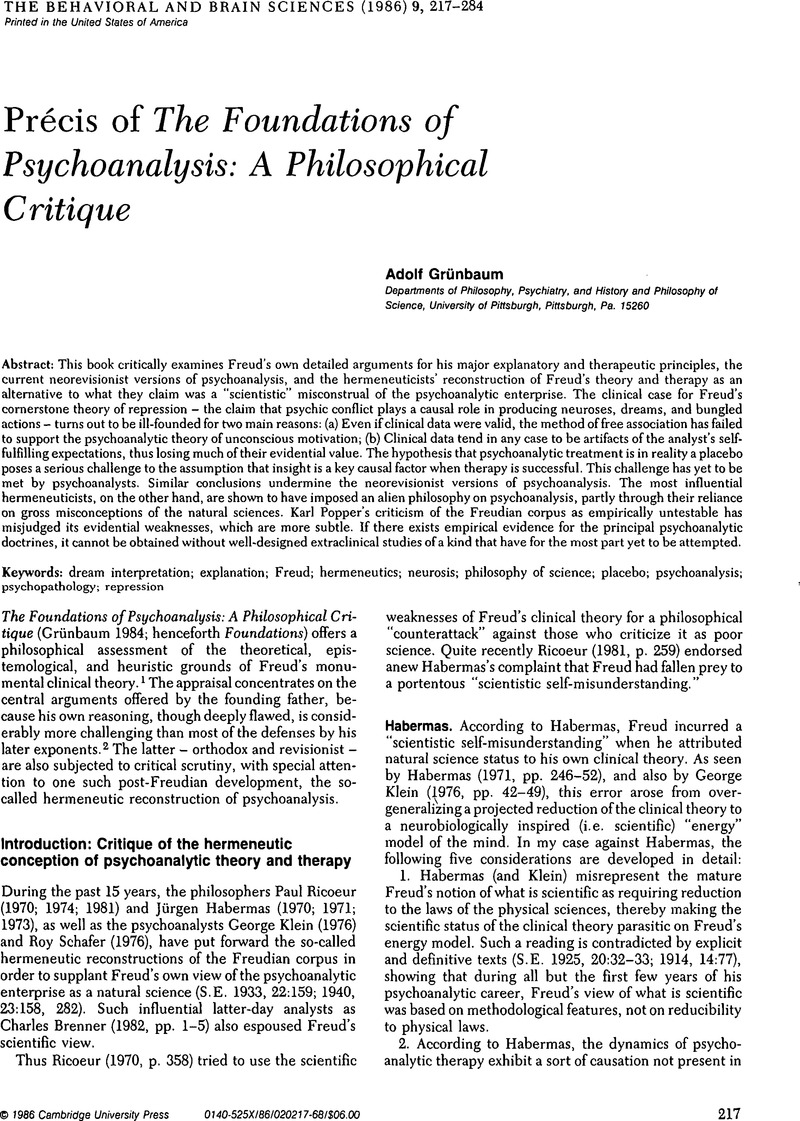Crossref Citations
This article has been cited by the following publications. This list is generated based on data provided by Crossref.
Meissner, W. W.
1990.
Foundations of Psychoanalysis Reconsidered.
Journal of the American Psychoanalytic Association,
Vol. 38,
Issue. 3,
p.
523.
Derksen, A. A.
1992.
Does the Tally Argument Make Freud a Sophisticated Methodologist?.
Philosophy of Science,
Vol. 59,
Issue. 1,
p.
75.



